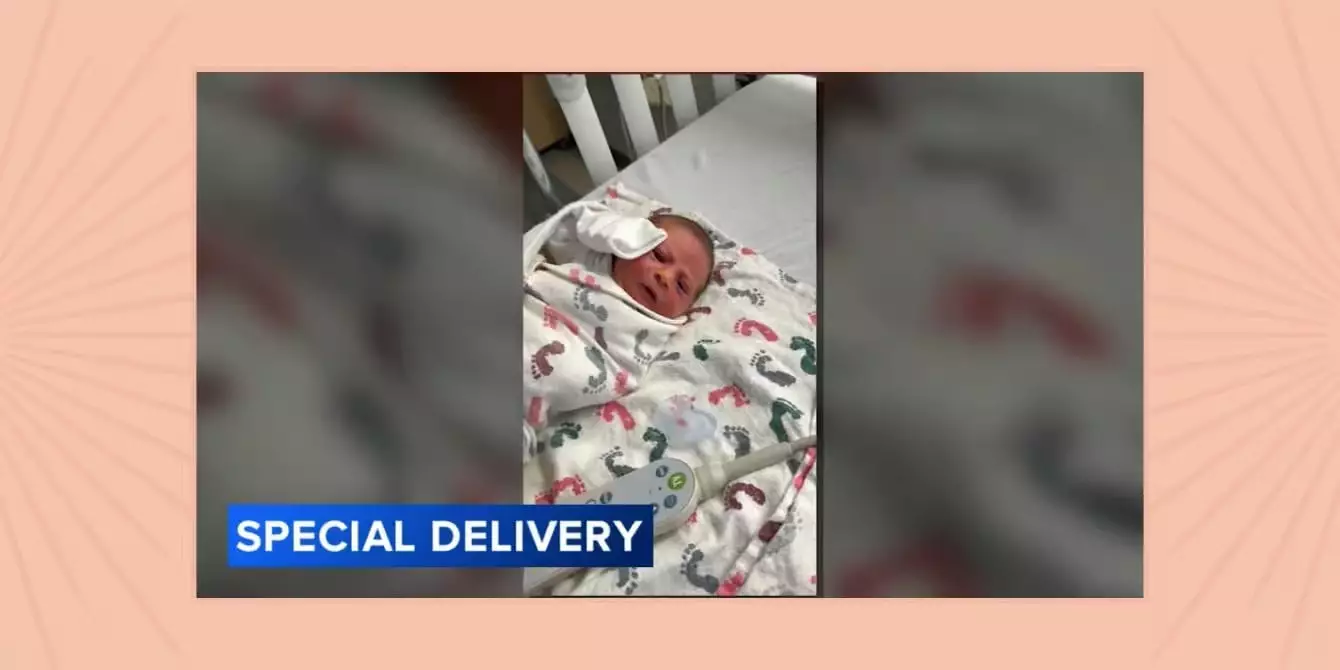Life often unfolds in unpredictable ways, especially within the realm of family and love. The story of Elissa Danielle West is a testament to the profound truth that love persists, even in the face of grief. Her experience—delivering her grandson under urgent circumstances just hours after losing her mother—embodies the complex dance of sorrow and hope that characterizes the human condition. This juxtaposition reveals that grief does not obliterate the capacity for joy; rather, it often intertwines with it, creating a landscape where sadness and happiness coexist. Such narratives challenge society’s tendency to compartmentalize emotions, urging us instead to embrace the full spectrum of our feelings as integral to healing and growth.
This extraordinary moment underscores a fundamental aspect of resilience: the human capacity to find meaning amid chaos. The birth of Noah, occurring immediately after Elissa’s loss, suggests a symbolism that transcends coincidence. It embodies the idea that life cycles and love are interconnected in ways we may not immediately understand. While grief feels overwhelming and all-encompassing, it also awakens a deep internal strength, enabling individuals to transform pain into a catalyst for new life and connection. This profound reminder pushes us to reconsider how we process loss—viewing it not solely as an ending, but also as an opening for new beginnings that carry the legacy of those we’ve loved.
The Power of Emotional Duality
Science offers insights into the coexistence of conflicting emotions, illustrating that happiness and sorrow can not only exist simultaneously but can also deepen our understanding of ourselves and others. Research in psychology highlights how families experience and process grief while still celebrating new life. For families like the Wests, loss doesn’t diminish love—instead, it elevates it, shaping a more nuanced perspective of family bonds. The phenomenon of feeling both grief and joy at once is not a sign of emotional weakness but a testament to our complex emotional architecture.
Furthermore, these experiences foster a unique sense of connectedness within families. Children born after infant loss, for instance, often carry a heightened awareness of their significance. They are perceived as symbols of hope and continuation, knitting the past and present together in tangible ways. This emotional duality also influences decision-making about family planning. The intricate blend of sorrow and gratitude may propel individuals to seek new life, perhaps driven by an instinctual desire to honor memory through the act of creation. Recognizing that our feelings are multifaceted opens pathways for healing, allowing us to accept grief as part of a broader narrative that encompasses love, growth, and renewal.
Love’s Enduring Trace: Beyond Physical Presence
Elissa’s assertion that her mother’s love remains alive through her grandson reveals a vital truth: love does not die with loss; it transforms. Although the physical presence of loved ones may be gone, their influence persists in countless subtle ways. The emotional legacy of love—be it through memories, values, or the tangible act of welcoming new life—becomes an indelible thread woven into our existence.
This perspective challenges the often rigid understanding of love as something solely rooted in proximity and time. Instead, love becomes a flexible, dynamic force capable of adapting and manifesting in new forms. Noah’s arrival, in this context, can be seen as a living testament to the enduring impact of love that transcends physical death. It teaches us that love’s true power lies in its capacity to inspire, comfort, and guide us through the darkest corridors of grief into the light of hope.
Moreover, stories like Elissa’s serve as vital narratives for society, emphasizing that mourning and celebration are not mutually exclusive. They call for a compassionate reevaluation of how we support those navigating loss, urging us to acknowledge that healing involves acknowledging pain while embracing the possibility of renewal. Love’s resilience is what sustains us — a reminder that, even amid death, there are new life, new memories, and new bonds waiting to emerge, transforming sorrow into a testament of human endurance.
Societal Reflections and Personal Growth
The intersection of grief and joy evident in this story prompts a broader societal reflection. It underscores the importance of creating spaces where complex emotions can be expressed without shame or suppression. Societal expectations often pressure individuals to “move on” quickly from loss, but stories like these reveal the richness of the emotional experience and the necessity of patience and compassion.
On a personal level, embracing the duality of feelings fosters growth and encourages a more authentic way of living. Recognizing that it’s okay to feel joy in the midst of sorrow allows us to find peace and acceptance. It also paves the way for a deeper understanding of our emotional landscapes, enabling us to navigate future challenges with resilience and grace.
In the grander scheme, Noah’s birth signifies more than a family milestone; it embodies hope, continuity, and the indomitable human spirit’s ability to forge meaning from hardship. Love, in its infinite varieties, becomes both a guiding light and a quiet whisper of assurance that, no matter how dark the night, dawn will eventually arrive—bringing with it new possibilities and renewed purpose.

